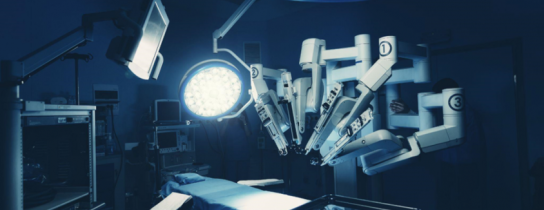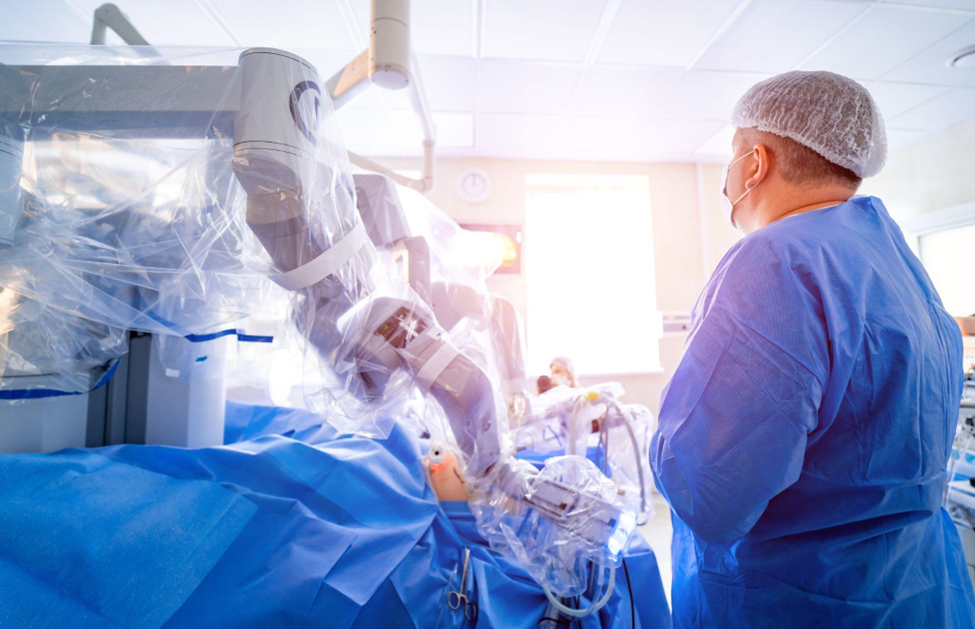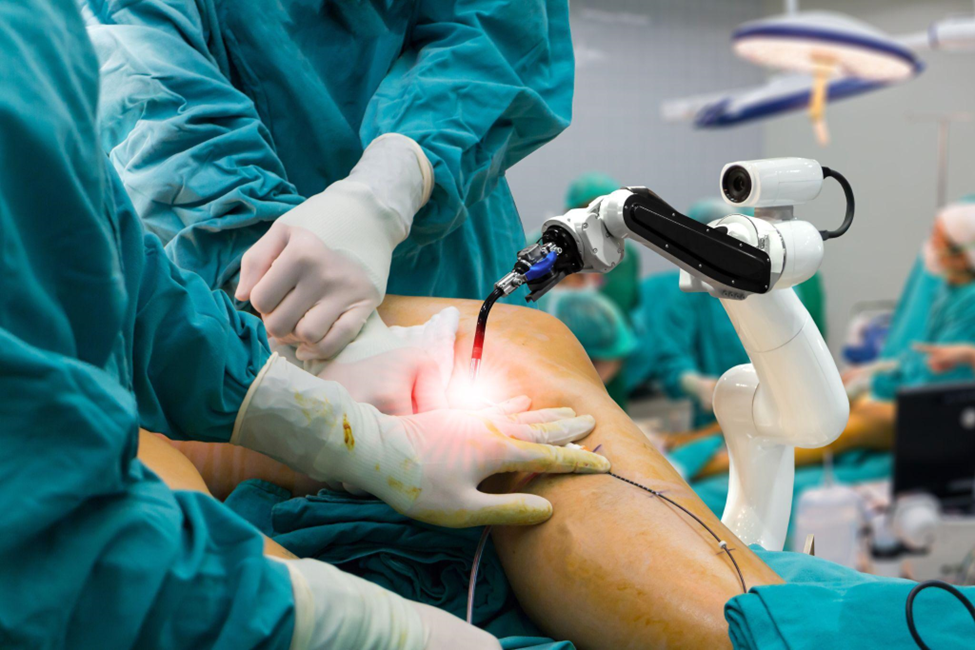
Robotic Surgery 101: Understanding the Basics and Benefits
Robotic surgery involves the use of specialized, doctor-guided machines that perform a range of complex surgical procedures. Some of the technologies used in this type of surgery include robotic arms, cameras, and a control console. Learn more about the history of robotic surgery, and how robotic instruments are used in Crystal Run Healthcare Ambulatory Surgery Center’s operating rooms.
Origins of Robotic Surgery: the Pioneers and Early Systems
The concept of robot-assisted surgery was first explored by NASA in the 1970s to provide needed surgery to astronauts who were in orbit. The Defense Advanced Research Projects Agency (DARPA) also had a similar idea, which was to assist wounded soldiers on the field with a remote surgical unit.1 Today, many types of surgeries use robotic instruments to assist or complete surgical procedures.
How Does It Work? An Overview of the Robotic Surgical System
Although there are many types of robotic surgical systems, they all essentially work in the same way. A surgeon controls the mechanical arms that are used to complete a procedure. Each mechanical arm serves a different function: one may have a camera attached to it, another will select and use surgical tools, or an arm may even be used to stabilize the patient’s limbs during surgical procedures.
Surgeons can control more than one mechanical arm at a time and switch between arms as needed during the procedure using a surgical console. The surgical console also provides the doctor with a high-definition, 3D view of the surgical site.
Some of the most common robotic surgery procedures include:
- Gynecologic procedures like hysterectomies
- Prostate surgery
- Head and neck surgery
- Colorectal procedures
- Gastrointestinal procedures
- Heart surgery
- Joint Surgery2
Advantages Over Traditional Surgery: Precision, Flexibility, and Minimized Invasion

Robot-assisted surgery offers several advantages over traditional open surgery. First, this type of surgery allows for greater precision; the robotic arms have a range of motion that human arms simply do not. Therefore, surgical instruments can be moved and positioned in smaller and more restrictive spaces, giving doctors far greater flexibility.
Robotic arms can also record the surgeon’s finger, wrist, and arm movements, and then mimic these movements during the procedure with mechanical precision and flexibility.
Another advantage of robotic surgical systems is their ability to magnify the surgical site. In the case of tissue repair procedures, for example, the console display is capable of magnifying the surgical site by 40 times and offers 10 times magnification for the surgical action of the robotic arms.3
It’s because of the greater precision and flexibility of the mechanical arms, along with the detailed digital visualization of robotic surgery systems, that these types of surgeries can also offer a far less invasive experience for patients.
Surgeons also benefit from robotic surgery. Surgeons experience greater comfort during robotic surgeries because the robotic arms do the necessary bending and stretching to access surgical sites. This reduces the risk of staff injuries that can occur during difficult or lengthy surgeries.
Recovery and Patient Experience: Quicker Healing and Reduced Hospital Stays
Several patients who have undergone robotic-assisted procedures have experienced quicker healing. This is because of the mechanical arms’ ability to move with such precision. Higher precision means fewer disturbances to the tissues surrounding the surgical site. It also means smaller incisions, which take less time to heal.
This great reduction in required healing time means that a patient can become mobile more quickly. In being able to do so, their risk of blood clots and other issues that can lengthen a hospital stay is greatly reduced or eliminated. The decreased healing time also means patients can return to their normal activities far sooner with robotic-assisted surgeries. All of these result in improved patient outcomes.4
Crystal Run’s Approach: Adopting Robotic Techniques for Enhanced Patient Care

Crystal Run’s mission is to improve the quality and delivery of healthcare, treating patients as people and not their medical conditions. Our coordinated care includes electronic health records that streamline treatment, a single point of contact for patients in hospital, and much more.
In addition to the technology we offer with our laboratory, endoscopy, and diagnostic radiology, Crystal Run is offering enhanced patient care with cutting-edge robotic techniques.
he faster recovery from minimally invasive surgery the use of robotics allows is of the utmost importance to patient health. This is why we embrace and adopt the latest robotic technologies.
Robotic surgeries allow patients to receive all of the benefits listed above, including improved outcomes and better overall health.
Learn More About Crystal Run’s Ambulatory Surgery Center
The Crystal Run Ambulatory Surgery Center (CRASC) provides patients with a safe and comfortable environment for receiving needed care. ASCs specialize in providing diagnostic, preventive, and surgical procedures on a same-day basis.
The CRASC is a state-of-the-art facility that benefits patients with the latest available robotic surgery technology, such as the Zimmer Biomet ROSA Knee System for total knee replacements, robotic surgery for prostate cancer, and the daVinci robot for gynecologic surgery, which allow our exceptional surgeons to provide advanced medical treatment. Our ASC features five operating rooms and two endoscopy procedure rooms.
Crystal Run’s expanding number of locations, wide range of specialty care, extended hours, online appointments, and urgent and walk-in appointments benefit patients with greater access to the medical care they require.
For non-surgical visits, our Middletown, Goshen, Newburgh, Warwick, Rock Hill, West Nyack, and Haverstraw, NY locations ensure that the medical treatment patients need is always close to home.
Discover more about the benefits of working with Crystal Run physicians, surgeons, and specialists or contact us today.
Sources:

 Optum Radiology at Crystal Run Healthcare
Optum Radiology at Crystal Run Healthcare Request medical records online
Request medical records online